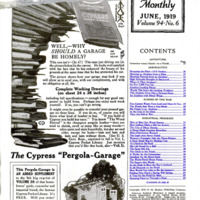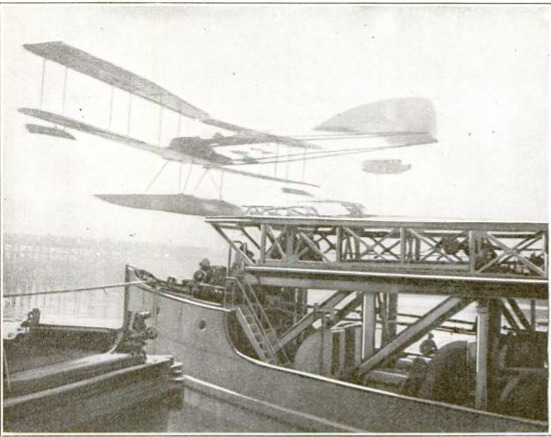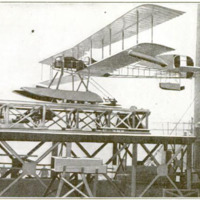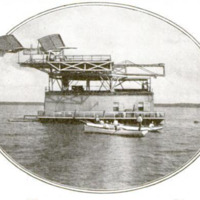Launching an airplane using a compressed-air catapult
Item
-
Title (Dublin Core)
-
Launching an airplane using a compressed-air catapult
-
Article Title and/or Image Caption (Dublin Core)
-
Shooting an Airplane from a Sling
-
extracted text (Extract Text)
-
THE great-grandfather
of the present engine-driven
airplane, Langley's aerodrome,
or rather a quarter-size model,
first flew in 1896. Later he
built other quarter-sized models,
and they all flew. He solved
the problem of getting his flying-
machine afloat in the air ocean
by hurling it from the roof of a
house-boat. He placed the air-
plane on a car which was pro-
pelled by springs along short
rails, and at the end of its run
stopped abruptly, thus shoot-
ing the airplane off into the
air. With this kind of a start,
the Langley model flew one
thousand feet in twenty-one -
seconds.
Langley did not succeed so
well in launching a man-
carrying planeby this method,
and later pioneers in the art
learned to run their machines
along the ground until they
got up speed enough to jump
them into the air, much as
some of the heavier birds
have to run a short distance
before taking flight.
But in order to get up
enough speed to lift the air-
planefrom the groundinto the
air large and comparatively
smooth fields —or, in the
case of hydroplanes, stretches
of quiet water—are needed
for the running start. To get
into the air from narrow
quarters, such as a ship's
deck, fiers had to go back to
Langley’s plan. How closely
the most recent attempts to
launch airplanes without the
aid of broad flying-fields re-
semble those of Langley is
shown in the pictures above.
Langley's machine weighed
about 640 pounds; the seaplane
weighs about two tons. Langley
hurled his machine along the
Taunching track by the thrust of
the airplanes own propellers
and the pull of a powerful coiled
Taunching spring of great power.
The British seaplane is shot
along the rails by a compressed-
air catapult. The parallel be-
tween the Langley experi-
ments and the British is made
all the more striking by the
fact that, while it was a
quarter-size model that Lang-
ley flew successfully, the
British in their attempt did
not care to risk a man in the
machine that was to be shot
into the air, and so both ma.
chines fell aftershort flights.
In our own Navy Captain
Washington I. Chambers
made successful experiments
in launching airplanes from a
ship's deck Several years ago.
More recently, airplanes have
been launched from runways
built across a battleship's
deck and outboard along the
barrels of the great guns, thus
giving the airplane room to
get a running start; but the
problem, so necessary to com-
mercial as well as to war
needs, of launching airplanes
from narrow quarters is still
to be solved. And coupled
with it is the still more diffi-
cult one of landing in a
restricted space.
-
Contributor (Dublin Core)
-
International Film Service (Image copyright)
-
Smithsonian Institution (Image copyright)
-
Language (Dublin Core)
-
eng
-
Date Issued (Dublin Core)
-
1919-06
-
pages (Bibliographic Ontology)
-
27
-
Rights (Dublin Core)
-
Public domain (Google digitized)
-
Archived by (Dublin Core)
-
Davide Donà
-
Marco Bortolami (editor)
 Popular Science Monthly, v. 94, n. 6, 1919
Popular Science Monthly, v. 94, n. 6, 1919






